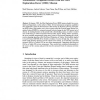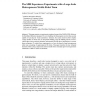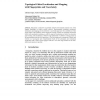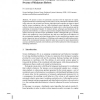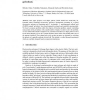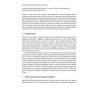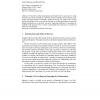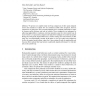ISER
2004
Springer
14 years 9 months ago
2004
Springer
The DARPA PerceptOR program implements a rigorous evaluative test program which fosters the development of field relevant outdoor mobile robots. Autonomous ground vehicles are depl...
ISER
2004
Springer
14 years 9 months ago
2004
Springer
In January, 2004, the Mars Exploration Rover (MER) mission landed two rovers, Spirit and Opportunity, on the surface of Mars. Several autonomous navigation capabilities were employ...
ISER
2004
Springer
14 years 9 months ago
2004
Springer
This paper reports on experiments conducted as part of the DARPA SDR (Software for Distributed Robotics) program. The core challenge for this program is to develop a system capable...
ISER
2004
Springer
14 years 9 months ago
2004
Springer
Navigation in unknown or partially unknown environments remains one of the biggest challenges in today's mobile robotics. Environmental modeling, perception, localization and ...
ISER
2004
Springer
14 years 9 months ago
2004
Springer
We present a series of experiments concerned with the inspection of regular, engineered structures carried out using swarms of five to twenty autonomous, miniature robots, solely ...
ISER
2004
Springer
14 years 9 months ago
2004
Springer
Abstract. This paper proposes wave-shape pattern control method for whole-body deformable robots containing electroactive polymers. Mechanisms consisting of a typical electroactive...
ISER
2004
Springer
14 years 9 months ago
2004
Springer
We have been trying to induce a quadruped robot to walk with medium walking speed on irregular terrain based on biological concepts. We propose the essential conditions for stable ...
ISER
2004
Springer
14 years 9 months ago
2004
Springer
As robots enter the human environment and come in contact with inexperienced users, they need to be able to interact with users in a multi-modal fashion—keyboard and mouse are n...
ISER
2004
Springer
14 years 9 months ago
2004
Springer
We describe crawling and jumping by a deformable robot. Locomotion over rough terrain has been achieved mainly by rigid body systems including crawlers and leg mechanisms. This pap...
ISER
2004
Springer
14 years 9 months ago
2004
Springer
We present our complete study involving comparisons of three spatio-temporal used in the estimation of optical flow for continuous mobile robot navigation. Previous comparisons of...

